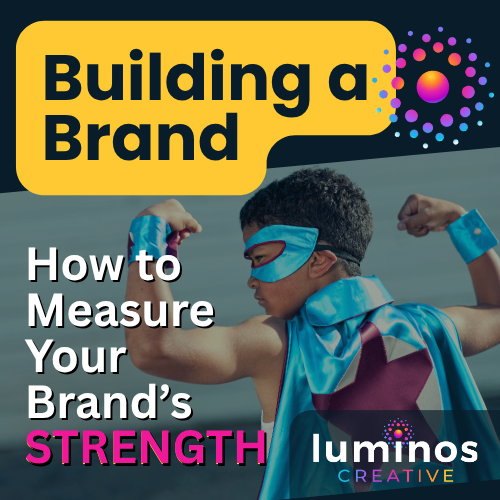In our previous posts, we explored how to build a brand and examined real-world case studies of companies that succeeded, or failed, at crafting a strong brand identity. But once you’ve defined who you are and how you want to be perceived, what should you do next? How do you know if it’s working?
Brand strength isn’t just a creative concept; it’s a measurable asset. In this post, we’ll break down how to assess your brand’s effectiveness using a mix of metrics, insights, and practical tools.
Why Measuring Brand Strength Matters
A strong brand doesn’t just look good on paper; it delivers real business value. It drives customer trust, loyalty, retention, and pricing power. If you’re not measuring your brand’s impact, you’re operating in the dark.
Here’s why measurement matters:
- Accountability: You can’t improve what you don’t measure!
- Resource allocation: Knowing what works helps you invest wisely. Investing in branding that isn’t resonating with your audience can do more harm than just wasting money; it can cause your brand to lose out on customers.
- Strategic alignment: Metrics reveal if your brand identity and customer perception actually match, or if you just think they do.
Key Metrics for Measuring Brand Strength
Brand strength is multi-dimensional. It includes how well people know you, how they feel about you, and how they behave as a result. Here’s a brief rundown of some of the most popular metrics that you can use to measure your company’s brand strength.
1. Awareness
- Brand Recall: Can people name your brand without being prompted? (Think: “Name a sneaker brand.”)
- Brand Recognition: Do people recognize your name or logo when they see it among others?
2. Perception
- Brand Sentiment: Use surveys or social listening to assess how customers feel about your brand.
- Net Promoter Score (NPS): Measures willingness to recommend. Promoters = strong advocates.
3. Brand Equity
- Brand Equity Score: Composite score based on brand awareness, loyalty, and perceived value.
- Share of Voice (SOV): Measures your visibility in your market compared to competitors.
4. Engagement
- Content & Website Engagement: Metrics like time on site, return visits, and bounce rate signal interest and trust.
- Social Media Performance: Followers, mentions, comments, and shares tell you how well your brand connects emotionally.
5. Behavior
- Customer Loyalty / Retention: Are people coming back? Retention and churn(the rate at which customers stop doing business with a company) offer a behavioral lens on brand strength.
- Price Elasticity: Strong brands can command higher prices without losing customers.
Tools to Help You Measure
You don’t need an enterprise budget to measure brand strength. Here are just a few accessible tools:
- Google Search Console / Google Trends – Track branded search interest over time with the audiences that matter.
- SurveyMonkey, Typeform, Delighted – Run NPS and perception surveys to get actionable insights.
- Hootsuite, Sprout Social, Brandwatch – Track and analyze brand mentions and sentiment.
- Hotjar, GA4, Mixpanel – Measure how users interact with your brand online.
- HubSpot, Salesforce – Use CRM data to assess brand impact on customer behavior.
Common Pitfalls to Avoid
Even with the right tools, many brands make missteps when measuring strength. Avoid these traps:
- Chasing vanity metrics: Likes and impressions can be an important indicator of how your brand is doing, but they don’t always translate to trust or sales in reality.
- Focusing only on short-term spikes: Sustainable brand strength is built over time. Don’t focus too much on short-term spikes or dips in performance. Remember, your brand is built over time continuously. Building a brand is a journey, not a race!
- Neglecting internal perception: How employees and partners view your brand matters just as much as customer sentiment.
Final Thoughts
Building a strong brand is only the beginning. Measuring that strength is what turns branding from art into strategy. Use these tools and metrics to track progress, diagnose problems, and align your brand identity with business performance.
Your brand lives in the minds of your customers—but you have the power to shape it, and now, to measure it too.
Thank you for joining us on our building a brand series! If you think you might need some additional guidance on branding or for any of your other marketing needs, please reach out to our team of experts here!

